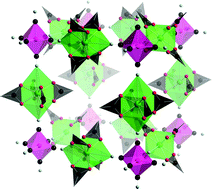The development of molecules and assemblies of molecules exhibiting technologically important bulk properties, such as magnetic ordering, is an important worldwide research focus. Organic- and molecule-based magnets have been discovered and several families have been reported with magnetic ordering temperatures exceeding room temperature and as high as ∼125 °C. Examples of both hard and soft magnets have been reported with coercivities as high at 27 000 Oe (and exceeding commercially available magnets) have been reported. Several examples are based on the radical anion of tetracyanoethylene, S = 1/2 [TCNE]˙−. The include ionic zero-dimensional (0-D) [FeCp*2]˙+[TCNE]˙− (Cp* = pentamethylcyclopentadienide), 1-D [MnTPP]+[TCNE]˙− [TPP = meso-tetraphenylporphinato] coordination polymers, and 3-D extended network structured M[TCNE]x·ySolvent (M = V, Mn, Fe, Co, Ni, Dy). This Perspective focuses on work in our laboratory that will be discussed at the Dalton Discussion 9 meeting entitled “Functional Molecular Assemblies.” In addition to the overview of TCNE-based organic magnets, the targeted design, preparation, and chemical as well as magnetic characterization of a new family of magnets based on S = 3/2 mixed-valent [RuII/III2(O2CR)4]+ (R = Me, But) is described. In particular [Ru2(O2CMe)4]3[Cr(CN)6] prepared from aqueous media possess two interpenetrating cubic lattices and magnetically orders at 33 K. In contrast, [Ru2(O2CBut)4]3[Cr(CN)6] forms a 2-D layered lattice and orders at 37.5 K. Both exhibit hysteretic behavior, however, this is quite anomalous for the former cubic lattice. This as well as other anomalous magnetic behaviors is attributed to the presence of the second interpenetrating lattice.


 Please wait while we load your content...
Please wait while we load your content...